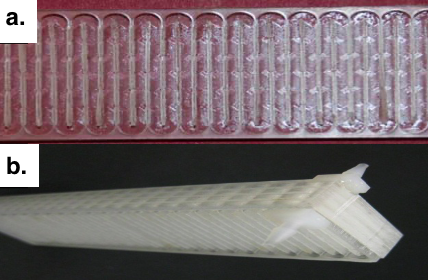Magnetic Nanoparticles
Continuous Nanoparticle Synthesis
Flow-through reactor for the synthesis of magnetic nanoparticles
With the growth in potential nanotechnology applications different methods are being developed to synthesize nanoparticles or nanocatalysts. Typically, nanoparticles are synthesized in batch reactions, limiting the quality and quantity of nanoparticles that can be synthesized. This has limited the impact nanoparticles have had on applications such as medical imaging and catalytic reactions. Researchers at Virginia Commonwealth University have developed a new method for the continuous development of magnetic nanoparticles.
The technology
Researchers at VCU have developed a novel flow-through reactor for the continuous synthesis of magnetic nanoparticles. This method utilizes a microfluidic reactor to increase the throughput of nanoparticle synthesis. In addition, utilizing this continuous method of synthesis allows for greater control over particle size, shape, and quality while also minimizing variations that are typically observed in batch to batch synthesis. By doing so, this flow-through method is able to produce a far greater amount of magnetic nanoparticles than the current methodology. This enables these particles to be used for applications in medical imaging and catalytic reactions. Lastly, the continuous synthesis method described here also allows for core shelled nanoparticles to be produced, further extending the variety of particles that can be synthesized with this methodology.

Figure 1. Fabricated microreactor module. a) Single fabricated cell b) reactor module built from single cells
